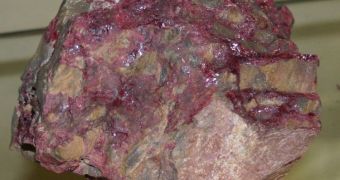There are currently in excess of 4,500 species of minerals on the planet, a significant increase from the 500 or so species that existed when Earth first formed. The origin of more than 67 percent of the new minerals has been traced back to biological activity, and now experts turn their attention to mercury.
These studies refer to minerals located near the surface of the planet, and not those deep down in the mantle or the core. Past investigations by Carnegie Institution of Science (CIS) expert Bob Hazen revealed biological and geological origins for most of these chemicals, but not for all.
Scientists are interested in learning how mercury came to be. While most people know the substance as the element that is able to pull itself together when spilled, few know that its most common naturally occurring form is mercury sulfide, or cinnabar.
In a new study, the CIS expert turned this team towards studying all minerals containing mercury, in order to figure out their origins. The conclusions of his work indicate that several episodes of supercontinent assembly, which took place around 3 billion years ago, were of critical importance.
Most mercury-containing minerals appeared around that time, Hazen and his team explain. Understanding where these chemicals come from is essential to learning more about our planet's ever-changing, near-surface geochemistry.
To date, experts found around 90 species of mercury-containing minerals on the planet. All of them occurred within the last 3 billion years or so, which means that Earth may have been completely devoid of the element for the first 1.5 billion years of its existence.
“Our work shows that in the case of mercury, evolution seems to have been driven by hydrothermal activity associated with continents colliding and forming mountain ranges, as well as by the drastic increase in oxygen caused by the rise of life on Earth,” Hazen explains.
He adds that only a handful of mercury-containing minerals were formed during periods of tectonic stability. “Future work will have to correlate specific mineral occurrences to specific tectonic events,” the investigator goes on to say.
Hazen conducted the work together with colleagues at CIS, the University of Arizona, the University of Maine, and the Johns Hopkins University, all in the US.
“It’s important to keep honing in on the ways that minerals have evolved on our planet from their simple elemental origins to the vast array in existence today,” he concludes.

 14 DAY TRIAL //
14 DAY TRIAL //